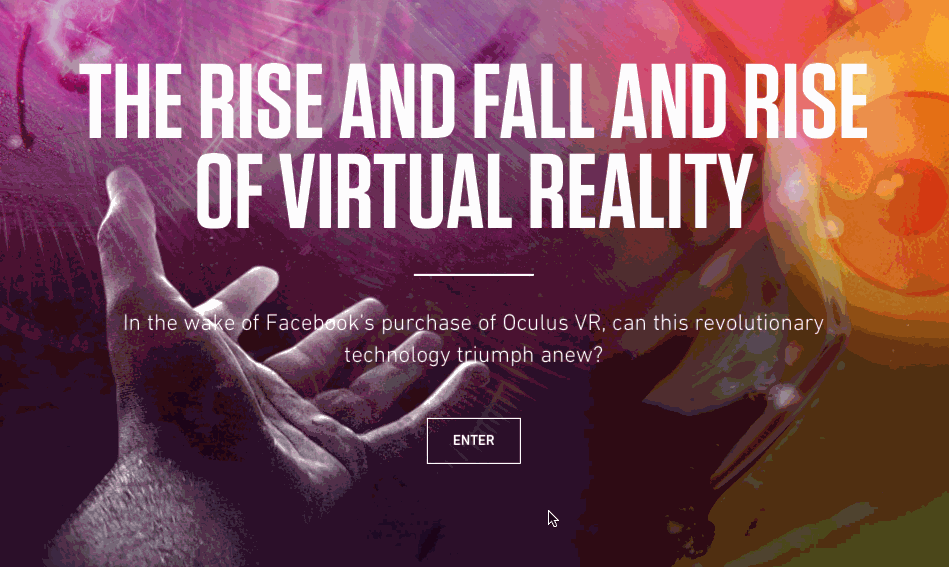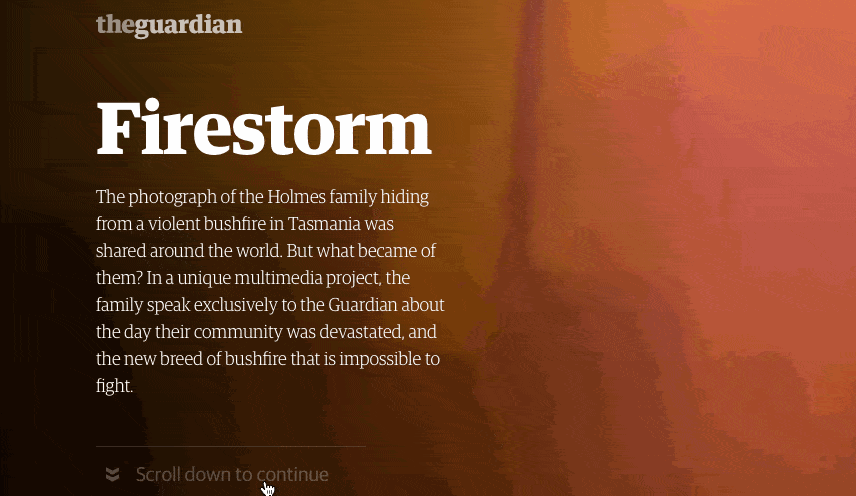Storytelling has been with us since the beginning of culture. We’ve used the narrative to pass along information long before the written word, and in the age of the internet, it stays a powerful tool to compel and convert.
More so than any call-to-action, fancy buzzwords or marketing gimmick, effective storytelling is great for connecting with users on a visceral, “I get it” level.
Similar to the moral or revelation at the end of a good book, users following your company’s/business’s/project’s narrative on a website can find a reason to invest their time and interest in said product. A structured beginning, middle and end are instantly familiar to us.
With that said, there are a few things to keep in mind to do this right.
Cohesive Design
Just as a story’s setting is important to legitimize the narrative in a user’s mind, the design of your website’s interactive story page(s) have to flow and be organized in a way that complements your brand story and content.
The look and feel of the webpage has to match with the point and feeling of what you’re trying to get across, otherwise there’s a disconnect with what the user is reading and with what they’re seeing.
The Verge’s coverage on Eboy and 8-Bit pixel art is a great example, using retro videogame aesthetics to complement the topic, bringing the reader into the world and culture of what they’re reading about as they read about it.
Multimedia Integration
Our ancestors used spoken word with annunciation and vigor. Shakespeare used prose and emotive dialogue.
A story is defined by the tools used to deliver it, and the internet offers a plethora of tools that separate it as a storytelling medium from others. Integrate text, video, photography and effects such as parallax and smooth scroll to seamlessly create not just text on a screen, but an entire experience.
Pull your user in and make them feel like they’re really a part of the story.
The New York Times ran a story about the Filipino/Chinese dispute over the South China Sea which pulled the reader directly into the ocean with looping video, audio of waves crashing, and map integration.

The Verge’s coverage of Virtual Reality is also great with its scrolling effects and choice of images.

Know When to Use It
Interactive storytelling is an effective tool but to be used sparingly. Users may want to visit your page to get instant information. A website like Wikipedia, for instance, would not benefit from a drawn out beginning, middle and end to its articles, because readers are seeking the data and information from the get-go.
Storytelling is a great technique to bring users into content that might be a bit dry or uninteresting, or to grasp a detailed campaign or product story/feeling in one sitting. It’s good for embellishment, bringing out the “feeling” of a product/piece/company on top of the data and information.
Annual reports, CSR reports, and news stories/'magazine'-style content are great fits for interactive storytelling.

Use a CMS
A CMS, whether for pushing out your story across multiple channels, or to guide your layouts on a grid system, is
great for streamlining work on an interactive story project.
It can provide the backbone for the page to rest on, leaving only the content and styling to be worried about. It will allow the content to be created and maintained by the people who own and care about the content, and break that dependence on indifferent developers, allowing you to get your story across the way you want, more quickly and efficiently.
It’s also great for keeping a cohesive design, as style rules can instantly match up how the headings, banners and fonts look on your interactive story page with the rest of your website/branding.
